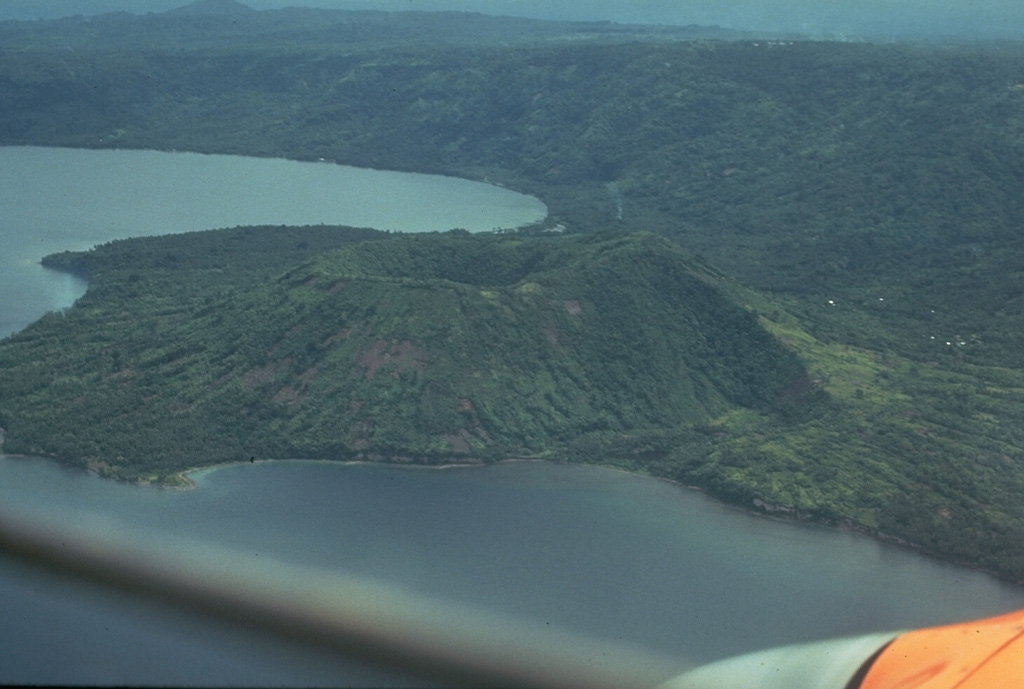Image GVP-00474

The largest historical Rabaul eruption took place from 29 May to 2 June 1937 from two vents on opposite sides of the caldera, Vulcan and Tavurvur. Present-day Vulcan, seen here from the NE, was built up from sea level to a height of 243 m during four days of powerful explosive eruptions that ended the evening of 2 June. About 500 people were killed by pyroclastic flows and heavy ashfall. Rabaul city was buried by ash and pumice, and a tsunami swept ships onto the shore. Tavurvur was active for less than one day.
Photo by Russell Blong, 1980 (Macquarie University).
![]() This image is made available under the Creative Commons BY-NC 4.0 license terms.
This image is made available under the Creative Commons BY-NC 4.0 license terms.
Keywords: crater | cone | caldera

Rabaul
